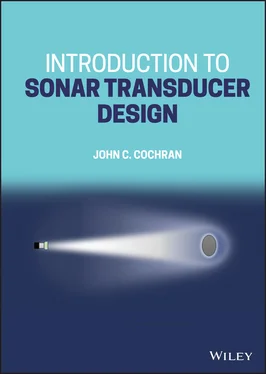381 377
382 378
383 379
384 380
385 381
386 382
387 383
388 384
389 385
390 386
391 387
392 388
393 389
394 390
395 391
396 392
397 393
398 394
399 395
400 396
401 397
402 398
403 399
404 400
405 401
406 402
407 403
408 404
409 405
410 406
411 407
412 408
413 409
414 410
415 411
416 412
417 413
418 414
419 415
420 416
421 417
422 418
423 419
424 420
425 421
426 422
427 423
428 424
429 425
430 426
431 427
432 428
433 429
434 430
435 431
436 432
437 433
438 434
439 435
440 436
441 437
442 439
443 440
444 441
445 442
446 443
447 444
448 445
449 446
450 447
451 448
452 449
453 450
454 451
455 452
456 453
457 454
458 455
459 456
460 457
461 458
462 459
463 460
464 461
465 462
466 463
467 464
468 465
469 466
470 467
471 468
472 469
473 470
474 471
475 472
476 473
477 474
478 475
479 476
480 477
481 478
482 479
483 480
484 481
485 482
486 483
487 484
488 485
489 486
490 487
491 488
492 489
493 490
494 491
495 492
496 493
497 494
498 495
499 496
500 497
501 498
502 499
503 500
504 501
505 502
506 503
507 504
508 505
509 506
510 507
511 509
512 510
513 511
514 512
515 513
516 514
517 515
518 516
519 517
520 518
521 519
522 520
523 521
524 522
525 523
Introduction to Sonar Transducer Design
John C. Cochran
Raytheon Technologies, RI, USA (Retired)

This edition first published 2022 © 2022 John Wiley & Sons, Inc.
All rights reserved. No part of this publication may be reproduced, stored in a retrieval system, or transmitted, in any form or by any means, electronic, mechanical, photocopying, recording or otherwise, except as permitted by law. Advice on how to obtain permission to reuse material from this title is available at http://www.wiley.com/go/permissions.
The right of John C. Cochran to be identified as the author of this work has been asserted in accordance with law.
Registered Office John Wiley & Sons, Inc., 111 River Street, Hoboken, NJ 07030, USA
Editorial Office 9600 Garsington Road, Oxford, OX4 2DQ, UK
For details of our global editorial offices, customer services, and more information about Wiley products visit us at www.wiley.com.
Wiley also publishes its books in a variety of electronic formats and by print‐on‐demand. Some content that appears in standard print versions of this book may not be available in other formats.
Limit of Liability/Disclaimer of Warranty While the publisher and authors have used their best efforts in preparing this work, they make no representations or warranties with respect to the accuracy or completeness of the contents of this work and specifically disclaim all warranties, including without limitation any implied warranties of merchantability or fitness for a particular purpose. No warranty may be created or extended by sales representatives, written sales materials or promotional statements for this work. The fact that an organization, website, or product is referred to in this work as a citation and/or potential source of further information does not mean that the publisher and authors endorse the information or services the organization, website, or product may provide or recommendations it may make. This work is sold with the understanding that the publisher is not engaged in rendering professional services. The advice and strategies contained herein may not be suitable for your situation. You should consult with a specialist where appropriate. Further, readers should be aware that websites listed in this work may have changed or disappeared between when this work was written and when it is read. Neither the publisher nor authors shall be liable for any loss of profit or any other commercial damages, including but not limited to special, incidental, consequential, or other damages.
Library of Congress Cataloging‐in‐Publication Data applied for:
ISBN: 9781119851059
Cover Design: Wiley
Cover Image: © John C. Cochran
I dedicate this book to those who have alwaysbeen there for me: my wife Elizabeth; my children Laura, Daniel, Sarah, and Rebecca; and my mom and dad. I love you all.
This text is the result of my efforts over the years to understand the broad subject of underwater electroacoustic transducer design. To fully understand underwater transducers, one must understand many different aspects of physics, electrical, and mechanical engineering. It is the broad nature of acoustic transduction that I enjoy very much.
I started working in the underwater transducer business in 1983. I joined a small company which specialized in the design and manufacture of underwater acoustic transducers. At the time, I had no idea what a transducer was. I quickly found that you had to be a jack‐of‐all‐trades in order to be successful at making transducers. The wide range of expertise required to fully understand underwater transducer design was very attractive to me. I was not one to be pigeonholed into any one particular area of engineering discipline. I embraced the opportunity to be what I consider a true engineer to be – an individual who employs the basic principles of physics and chemistry to solve practical problems and who can implement these solutions into a manufacturable product.
Unfortunately, the process of “coming up to speed” in transducer design is made very difficult by the lack of specific texts that address the subject. There are texts that address the mechanics of piezo‐electric materials and texts on acoustic theory, but there are very few texts that address the broad range of topics associated with underwater transducer design. As a result, I was constantly bombarded with “rules of thumb” that had their basis in sound physical principles but for which no one could account. Not being one to accept the “rules of thumb” on faith alone, I have endeavored to understand the basis for the theories that are applicable to underwater transducer design. It is these basic principles that I hope to document in this text.
I consider the text to be an introductory text in underwater acoustic transducer design. The text walks through the development of various theories starting from the first principles. In some cases, the mathematical development may lead someone to think that I should have jumped to the answer sooner. However, it is for the beginner in this field that I have written this book. The beginner should feel that he can follow mathematical development completely. I have put many of the intermediate mathematical steps into this text.
Though written for the beginner in this field, the text is also for the advanced student or practicing engineer. The mathematical development is fairly thorough and requires some experience with advanced mathematical functions (such as Bessel’s functions) in order to get the most out of it.
Читать дальше













![John Ruskin - Stones of Venice [introductions]](/books/732383/john-ruskin-stones-of-venice-introductions-thumb.webp)